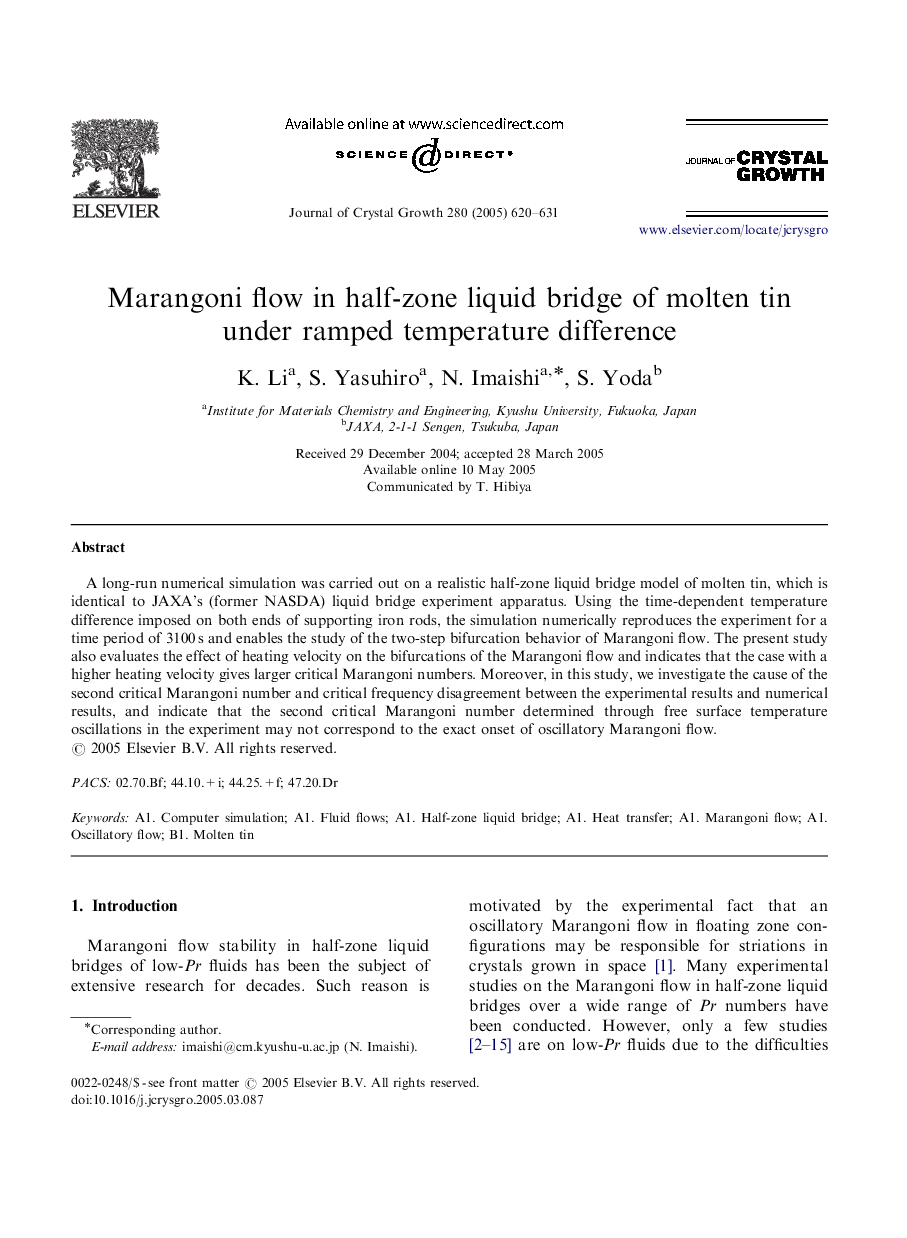| Article ID | Journal | Published Year | Pages | File Type |
|---|---|---|---|---|
| 9829649 | Journal of Crystal Growth | 2005 | 12 Pages |
Abstract
A long-run numerical simulation was carried out on a realistic half-zone liquid bridge model of molten tin, which is identical to JAXA's (former NASDA) liquid bridge experiment apparatus. Using the time-dependent temperature difference imposed on both ends of supporting iron rods, the simulation numerically reproduces the experiment for a time period of 3100Â s and enables the study of the two-step bifurcation behavior of Marangoni flow. The present study also evaluates the effect of heating velocity on the bifurcations of the Marangoni flow and indicates that the case with a higher heating velocity gives larger critical Marangoni numbers. Moreover, in this study, we investigate the cause of the second critical Marangoni number and critical frequency disagreement between the experimental results and numerical results, and indicate that the second critical Marangoni number determined through free surface temperature oscillations in the experiment may not correspond to the exact onset of oscillatory Marangoni flow.
Related Topics
Physical Sciences and Engineering
Physics and Astronomy
Condensed Matter Physics
Authors
K. Li, S. Yasuhiro, N. Imaishi, S. Yoda,
